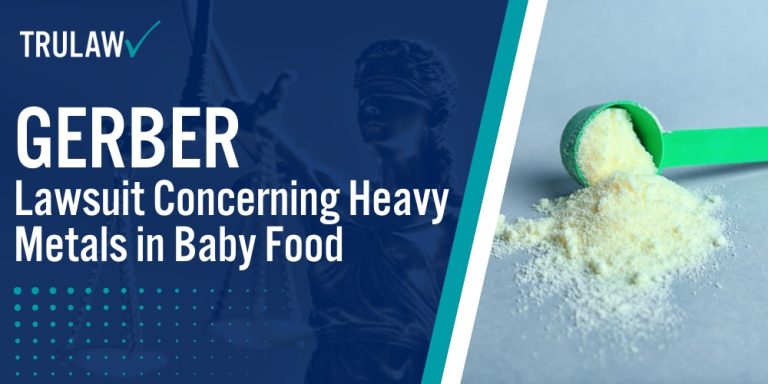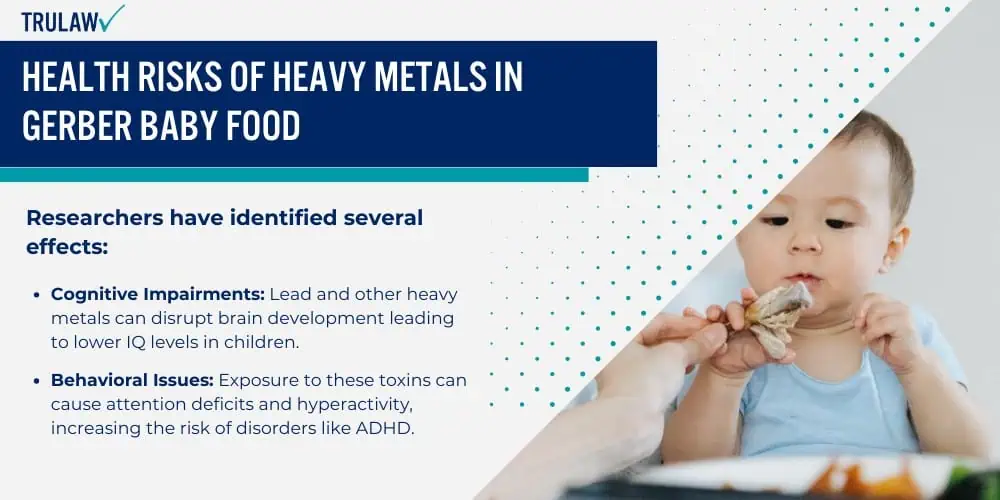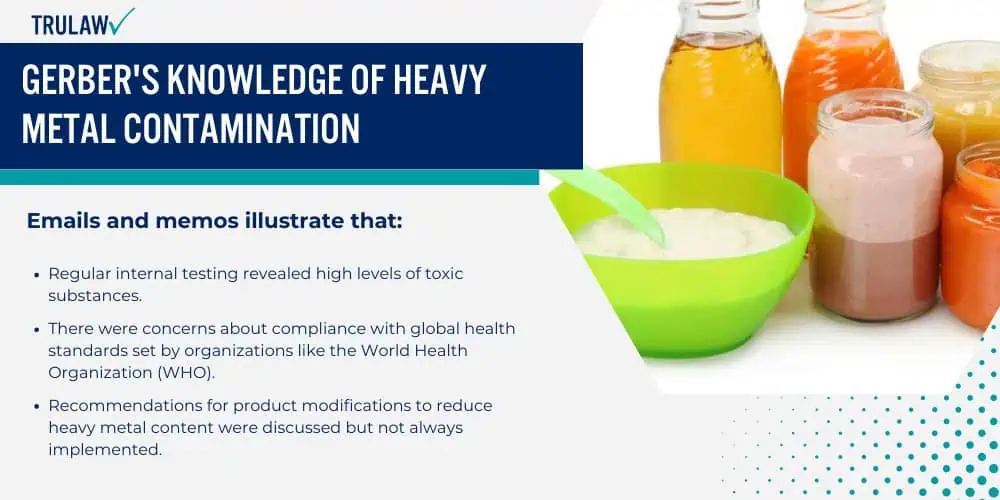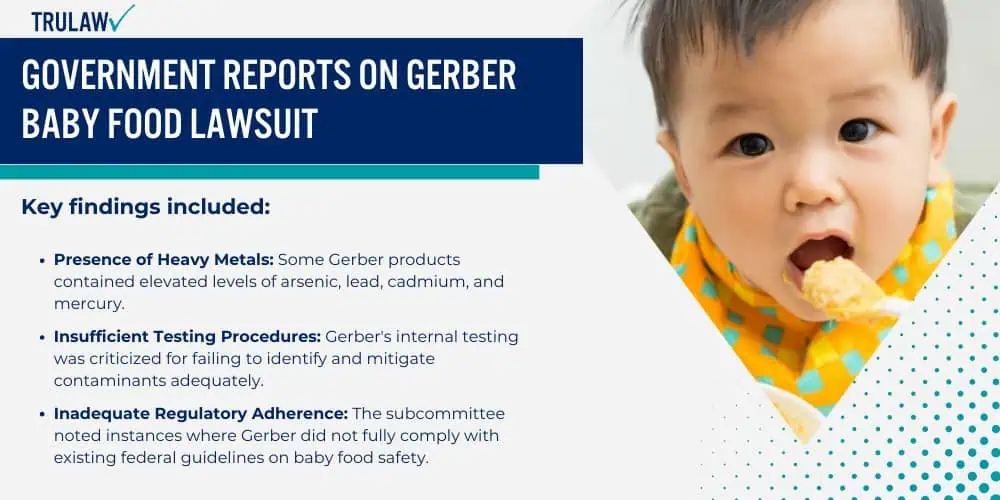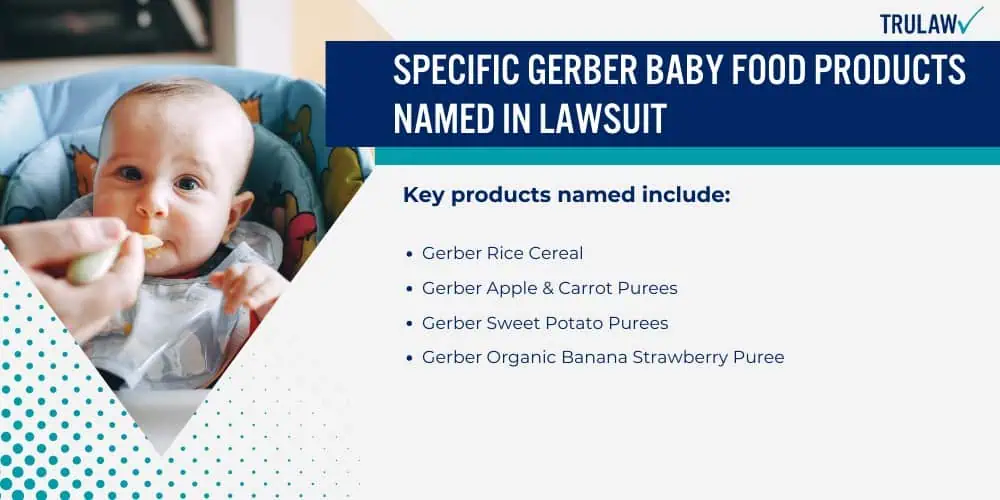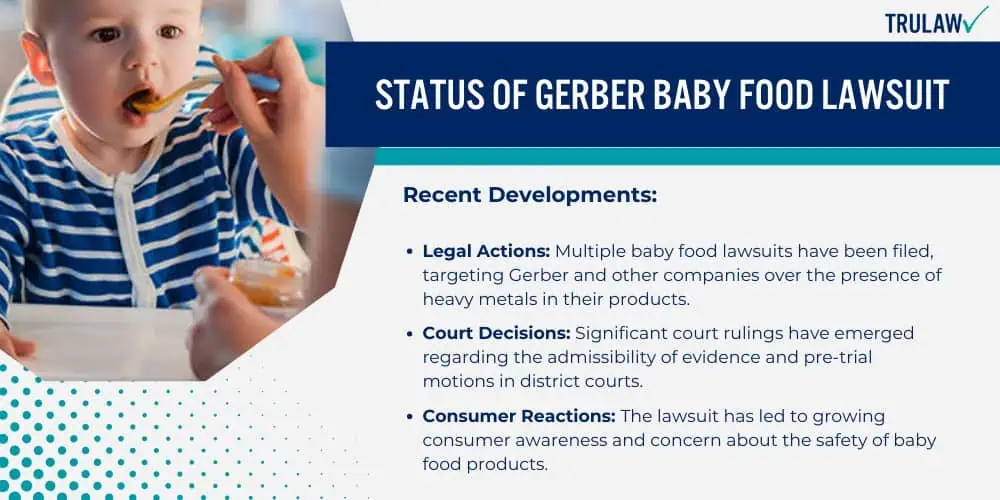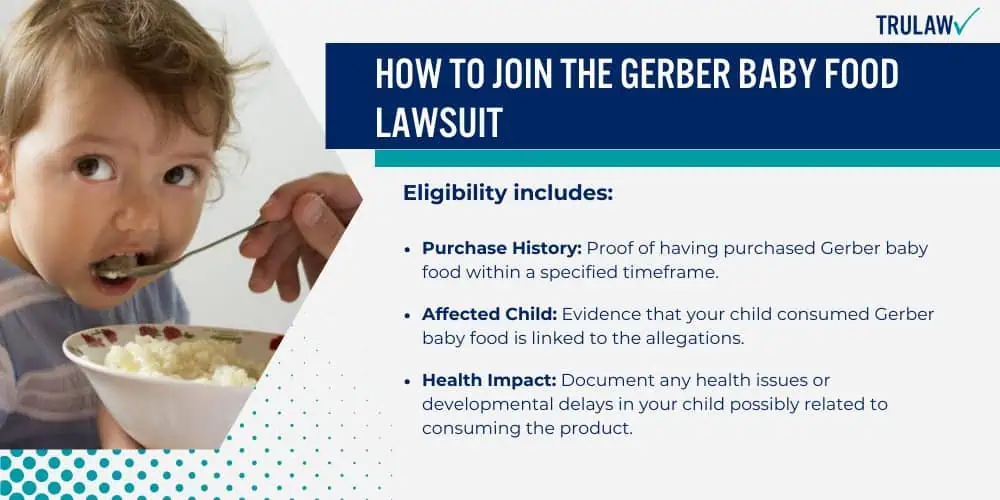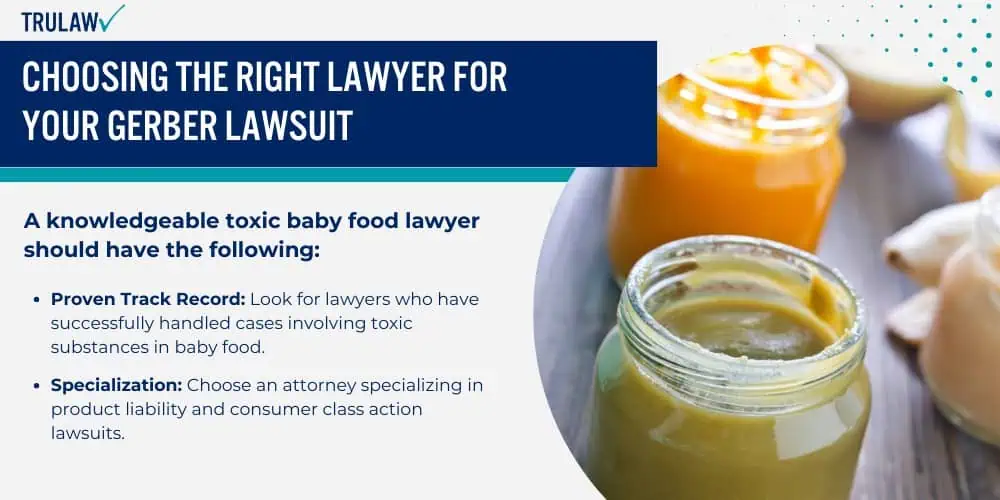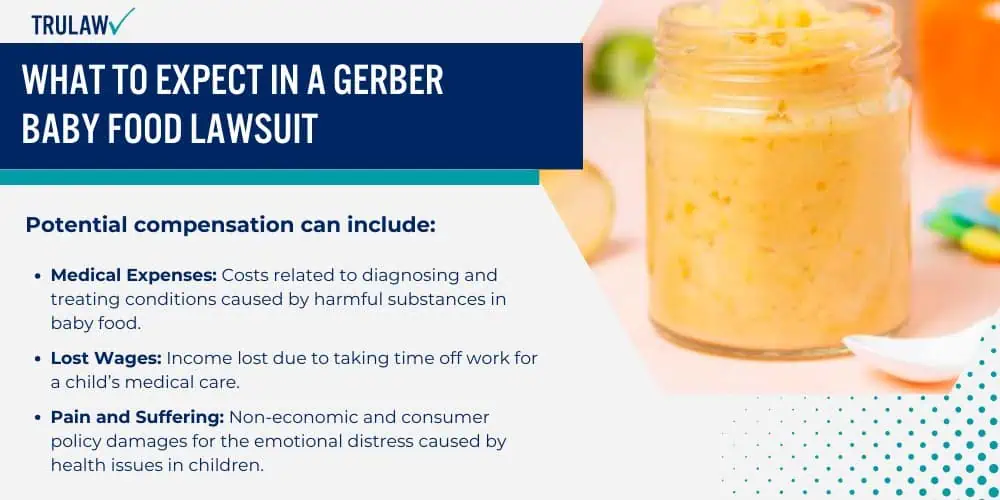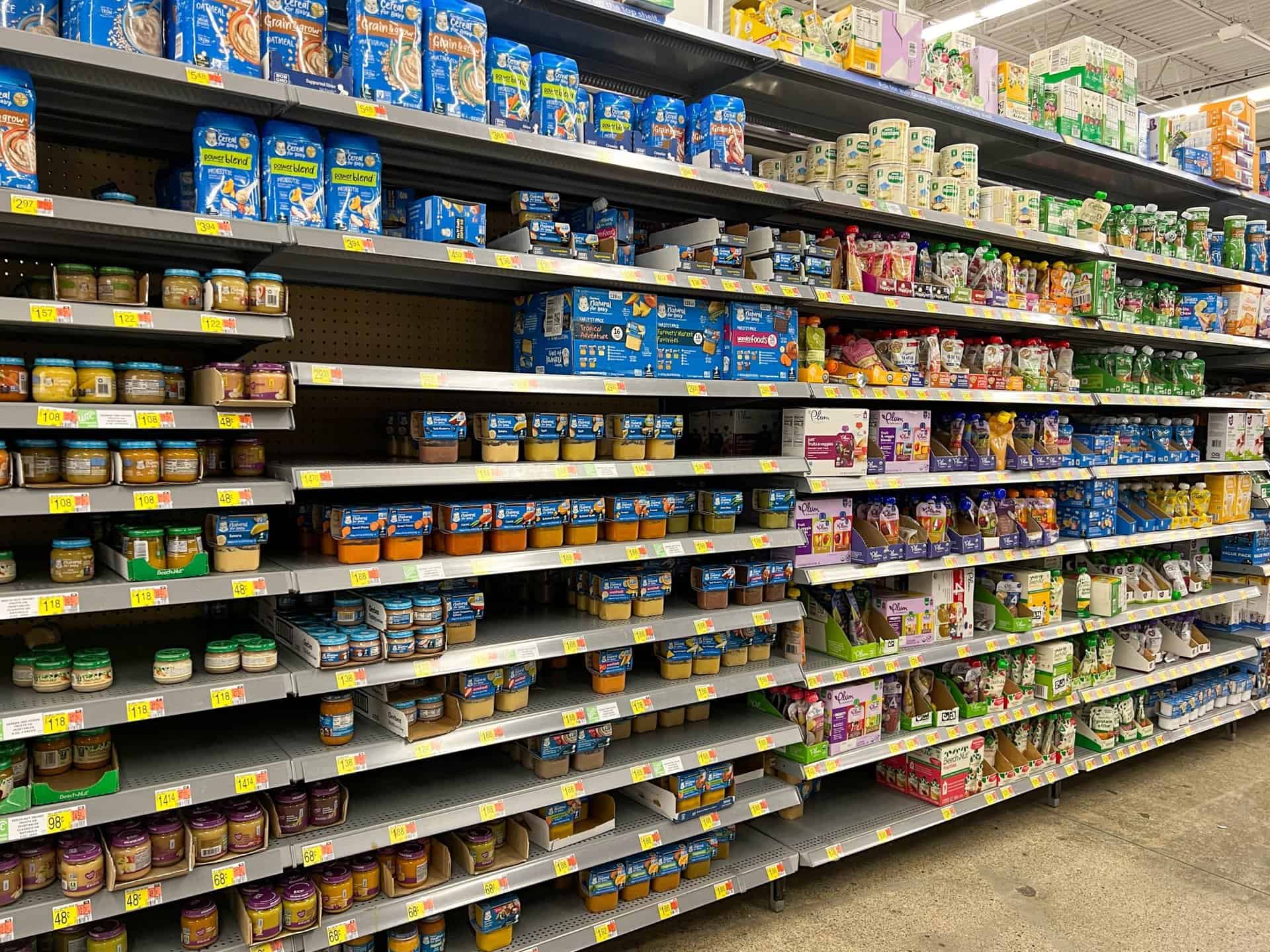Researchers and legal analysts have found concerning levels of toxic heavy metals in several baby food products, including some from major baby food brands like Gerber.
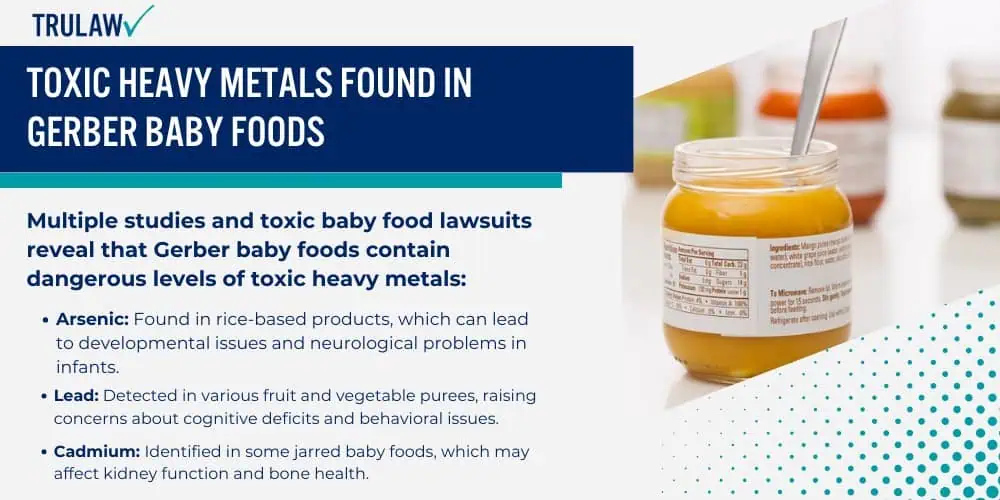
Elevated arsenic, lead, cadmium, and mercury levels pose potential health risks for infants and toddlers.
Dangerous Levels of Arsenic, Lead, Cadmium & Mercury
The presence of heavy metals in baby foods poses serious health risks to infants, as their developing bodies are highly vulnerable to toxic substances.
Parents are becoming increasingly concerned about the safety of the foods they feed their children, demanding greater transparency and stricter safety standards.
Multiple studies and toxic baby food lawsuits reveal that Gerber baby foods contain dangerous levels of toxic heavy metals:
- Arsenic: Found in rice-based products, which can lead to developmental issues and neurological problems in infants.
- Lead: Detected in various fruit and vegetable purees, raising concerns about cognitive deficits and behavioral issues.
- Cadmium: Identified in some jarred baby foods, which may affect kidney function and bone health.
- Mercury: Present in trace amounts, particularly in seafood-based products, potentially impacting brain development.
The presence of these metals in toxic baby foods has led to increased scrutiny and calls for stricter regulations.
Gerber’s Failure to Test for Heavy Metal Contamination
This lack of vigilance has heightened concerns among parents about the potential dangers lurking in everyday baby foods.
The company’s negligence has sparked widespread outrage and demands for accountability.
Gerber’s failure to consistently test their products for heavy metal contamination has been a focal point of recent public and legal scrutiny:
- Inconsistent Testing: Gerber did not routinely test for all four metals, leaving gaps in their safety protocols.
- Regulatory Gaps: Despite USDA and FDA guidelines, Gerber’s internal testing procedures often fell short of these standards.
- Consumer Trust: The lack of comprehensive testing undermined consumer confidence in the safety of Gerber products.
- Legal Repercussions: Due to these oversights, the company has faced autism baby food lawsuits, leading to more rigorous testing and transparency demands.
Gerber has exposed its products to potential contamination through these failures, prompting calls for better practices and standards.
